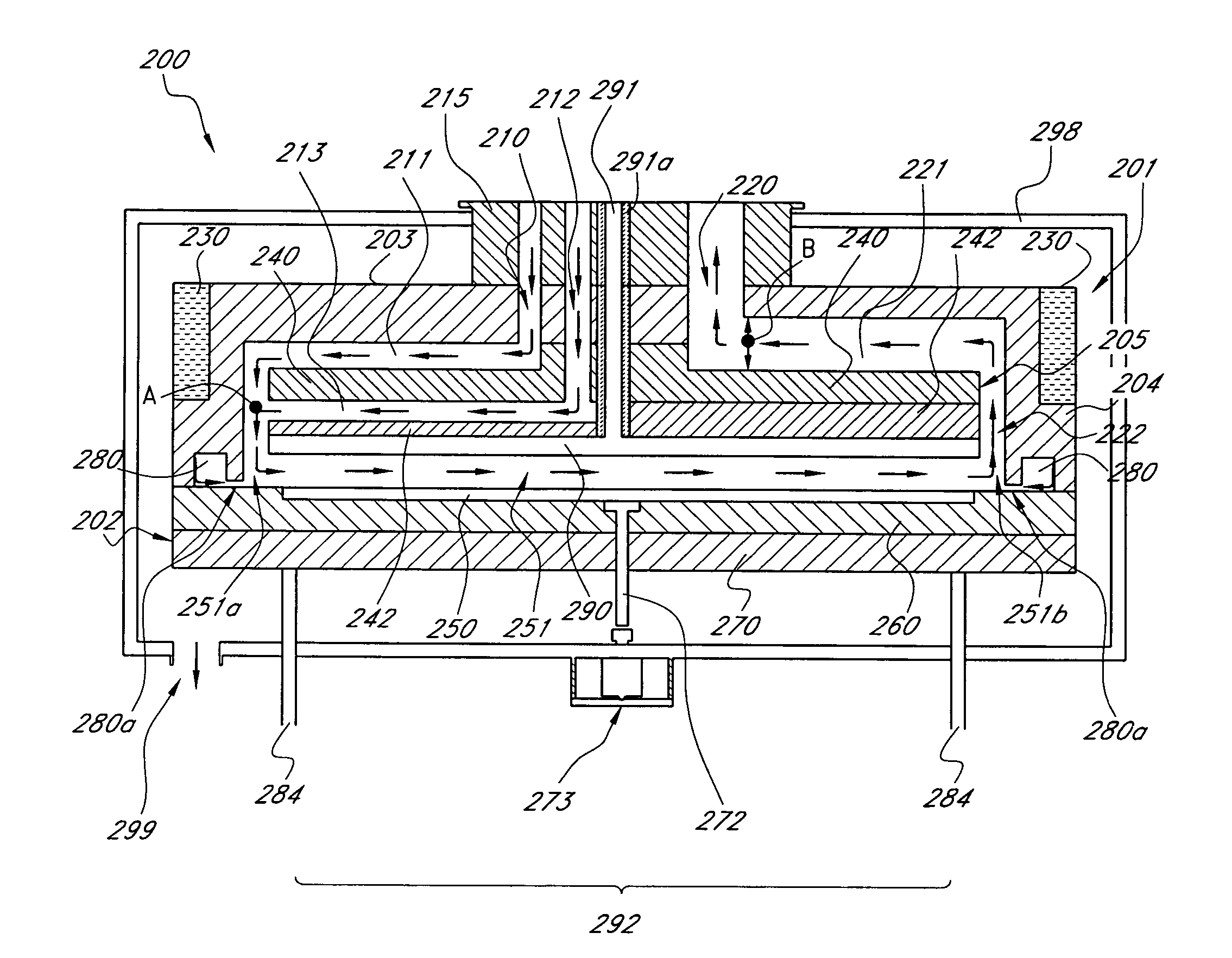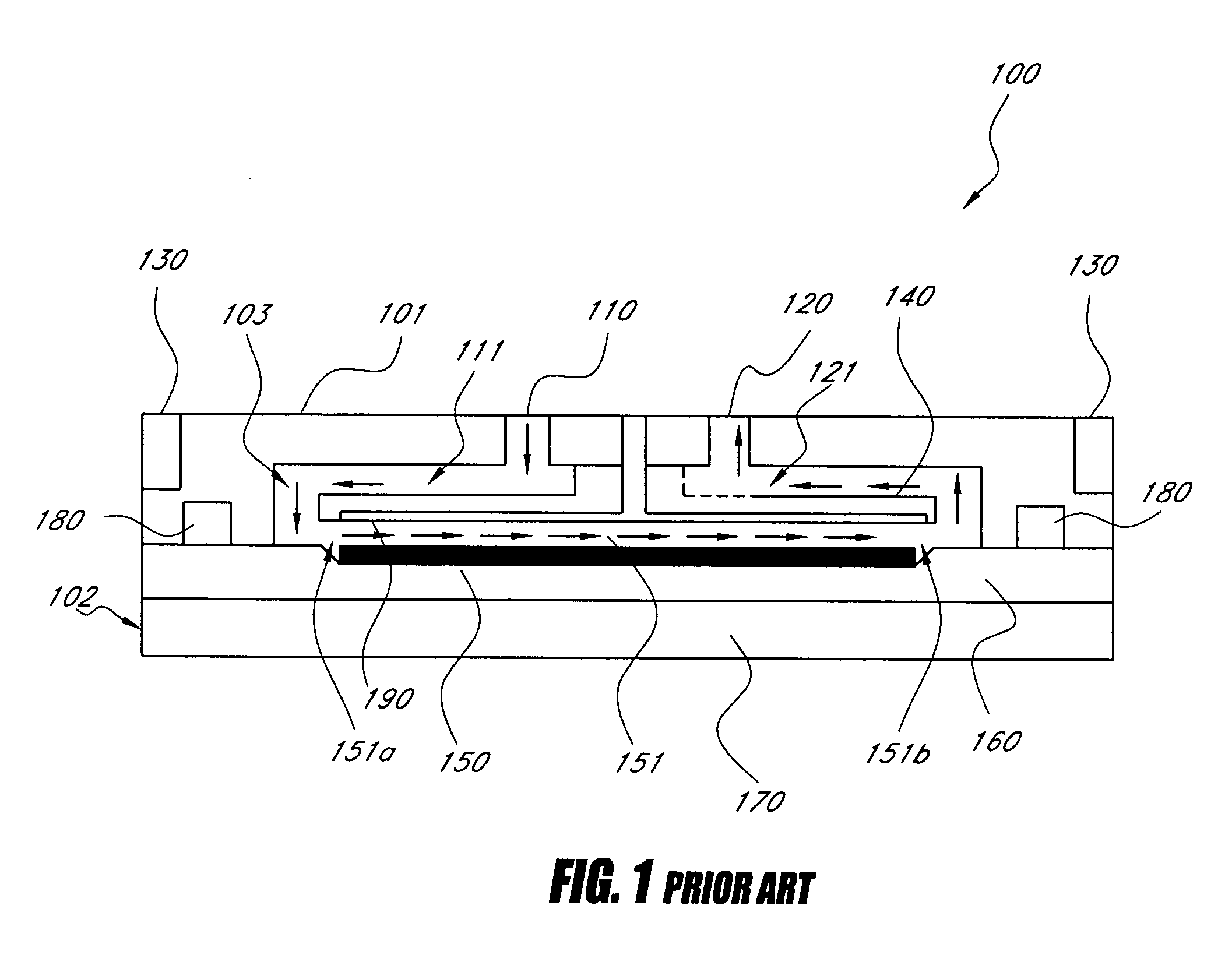Multiple inlet atomic layer deposition reactor
a technology of atomic layer deposition reactor and multi-inlet, which is applied in the direction of chemical vapor deposition coating, coating, coating process, etc., can solve the problems of complex reactant flow, difficult rapid switching of reactant gases, and inconvenient design of conventional reactor designed for cvd
- Summary
- Abstract
- Description
- Claims
- Application Information
AI Technical Summary
Benefits of technology
Problems solved by technology
Method used
Image
Examples
Embodiment Construction
[0019]FIG. 1 illustrates an ALD reactor suitable for a sequential introduction of reactants into a reaction space, similar to that disclosed in U.S. Pat. No. 6,539,891. In FIG. 1, a reactor 100 includes a reactor cover 101, a reactor base 102, and a gas flow control plate 140.
[0020] The reactor cover 101 constitutes an upper part of the reactor 100, and has a short cylinder-like structure with its top blocked. The reactor cover 101 includes a reactant inlet 110 and an exhaust outlet 120. A portion of a side wall of the reactor cover 101 is surrounded by a cover heater 130.
[0021] The reactor base 102 is positioned below the reactor cover 101. The reactor base 102 can move vertically with respect to the reactor cover 101. A substrate 150 can be loaded or unloaded while the reactor base 102 is separated from the reactor cover 101. For deposition, the reactor base 102 moves up and is in sealing contact with the reactor cover 101. The reactor base 102 is configured to define a reaction...
PUM
| Property | Measurement | Unit |
|---|---|---|
| temperature | aaaaa | aaaaa |
| temperature | aaaaa | aaaaa |
| cross-sectional area | aaaaa | aaaaa |
Abstract
Description
Claims
Application Information
 Login to View More
Login to View More - R&D
- Intellectual Property
- Life Sciences
- Materials
- Tech Scout
- Unparalleled Data Quality
- Higher Quality Content
- 60% Fewer Hallucinations
Browse by: Latest US Patents, China's latest patents, Technical Efficacy Thesaurus, Application Domain, Technology Topic, Popular Technical Reports.
© 2025 PatSnap. All rights reserved.Legal|Privacy policy|Modern Slavery Act Transparency Statement|Sitemap|About US| Contact US: help@patsnap.com



